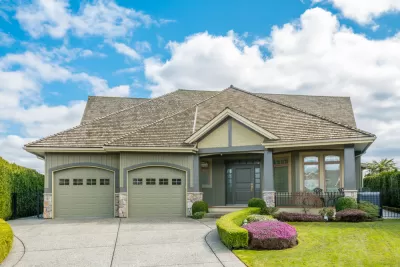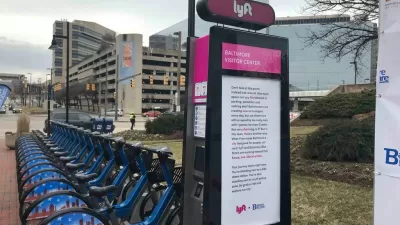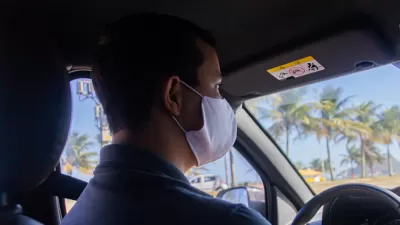A new study from KPMG predicts that the U.S. will go from a majority multi-car household to one where only 43% of households have more than one motor vehicle by 2040, and rideshare and car-share, along with demographic changes, will play key roles.

"As a growing number of consumers participate in car sharing [e.g., Zipcar], wait longer to buy their first vehicle and move to the suburbs, KPMG predicts that in about 25 years, fewer than half of U.S. households will own more than one vehicle," writes Phil LeBeau of CNBC.
According to the report, 57 percent of American households currently have two or more cars. Although that percentage has held relatively steady over the last couple of decades. Gary Silberg, (a partner at KPMG who conducted the study and heads KPMG's automotive practice) forecasts it will fall to 43 percent by 2040. That's thanks, in part, to the growing popularity of ride-share [e.g., Uber] companies.
The report is not centered on declining auto ownership, however. It is about the changing auto marketplace, and how auto manufacturers need to be innovative to survive. KPMG's press release states, "In its latest whitepaper, “Me, My Car, My Life [PDF],” KPMG’s automotive practice suggests that the era of ubiquitous connectivity - the moment when you, your car and your life are one - has arrived."
Greg Gardner of the Detroit Free Press adds to the dialogue on the future of car ownership by writing about a related, if conflicting talk given by Ford Motor Co. executive chairman Bill Ford in Dubai on Nov. 19.
Where the KPMG study and Ford diverged was on the role the traditional auto industry will play in solving the challenge of urban mobility.
Gardner indicates that whereas Ford sees the auto industry rising to the occasion to meet urban residents' mobility needs, Silberg foresees "displacement of the status quo." "We will see new players surge forth, some old players reinvent themselves and others totally left behind", said Silberg.
"What if autonomous driving could extend the driving life of the elderly?" Ford asked. "What if this technology could enable them to maintain the personal freedom that comes from mobility? Imagine how that could improve their quality of life, and reduce some of the dependency on caregivers."
"Silberg held firm to his projection that technology will deliver alternatives to individual vehicle ownership," writes Gardner.
"Owning a car is not the most rational economic decision," he said. "The average price of a car is around $31,000. The minute you drive it off the lot you lose 11% and, by the way, it sits idle 90% of the time."
FULL STORY: Wave goodbye to the two-car family

Manufactured Crisis: Losing the Nation’s Largest Source of Unsubsidized Affordable Housing
Manufactured housing communities have long been an affordable housing option for millions of people living in the U.S., but that affordability is disappearing rapidly. How did we get here?

Americans May Be Stuck — But Why?
Americans are moving a lot less than they once did, and that is a problem. While Yoni Applebaum, in his highly-publicized article Stuck, gets the reasons badly wrong, it's still important to ask: why are we moving so much less than before?

Using Old Oil and Gas Wells for Green Energy Storage
Penn State researchers have found that repurposing abandoned oil and gas wells for geothermal-assisted compressed-air energy storage can boost efficiency, reduce environmental risks, and support clean energy and job transitions.

Greening Oakland’s School Grounds
With help from community partners like the Trust for Public Land, Oakland Unified School District is turning barren, asphalt-covered schoolyards into vibrant, green spaces that support outdoor learning, play, and student well-being.

California Governor Suspends CEQA Reviews for Utilities in Fire Areas
Utility restoration efforts in areas affected by the January wildfires in Los Angeles will be exempt from environmental regulations to speed up the rebuilding of essential infrastructure.

Native American Communities Prepare to Lead on Environmental Stewardship
In the face of federal threats to public lands and conservation efforts, indigenous groups continue to model nature-centered conservation efforts.
Urban Design for Planners 1: Software Tools
This six-course series explores essential urban design concepts using open source software and equips planners with the tools they need to participate fully in the urban design process.
Planning for Universal Design
Learn the tools for implementing Universal Design in planning regulations.
Heyer Gruel & Associates PA
City of Moreno Valley
Institute for Housing and Urban Development Studies (IHS)
City of Grandview
Harvard GSD Executive Education
Salt Lake City
NYU Wagner Graduate School of Public Service
City of Cambridge, Maryland





























